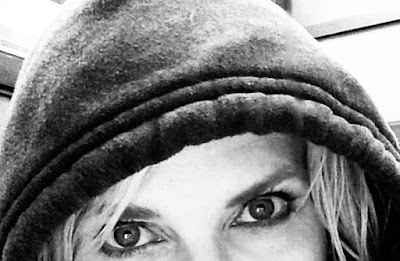I was 18 and fresh out of high school. Uncertain what I wanted to do with my life, where I wanted to do it, and, most importantly, who the heck I wanted to be, I enrolled in my hometown's university to bide some time.
The small college town I grew up in had exactly three bars: The artsy-alternative bar, the DJ/dancing bar, and the Cheers-type bar, where everyone really did know your name. I was 18, had zero bartending experience, and still, I was the perfect combination of ignorance and arrogance-- I applied to work at the latter.
Kip Allen, owner of the Edinboro Hotel Bar in Edinboro, Pennsylvania, hired me on the spot. I think he reasoned that if he hired a hometown kid at age 18, there was a good chance I'd stay at the bar all through my undergrad education. Because I lived in town, I wouldn't go home for college breaks such as summer or holidays, because, well, home was two miles away.
And he was right. I stayed put and tended bar all four years of college.
I had an absolute blast!
Many of my best memories from college come from working at the bar. At age 18, ineligible to drink legally, I was introduced to a whole new world.
I still laugh at the idea that I'd go to class during the day and serve my professors draft beer during happy hour.
When I came across my high-school vice-principal one happy hour, I asked him what I should call him now that I was serving him beer. "Asshole" was his reply. 😆 (He wasn't, by the way!)
I learned as much working at the bar as I did in college.
Along with learning how to make cocktails, I learned how to
- go with the flow
- provide service with a smile
- tell a good joke
- be assertive
- lighten up
- lift heavy things (carrying two cases of beer at a time up a rickety staircase was a lot!)
- deal with drunks
- laugh off advances
and much more.
But the best thing I learned was how to hustle.
HUSTLE verb. hus-tled, hus-tling to proceed or work rapidly or energetically
Kip told me that no matter what I did upon graduation, I could tell any interviewer that working at the bar taught me how to hustle.
And he was right.
With ease, I could transition from having an empty bar to serving a line of people that went out the door.
I could navigate my way around a sea of tipsy customers, all with different demands, demeanors, and drink requests.
And on Homecoming weekend each fall-- the busiest, best time of the year- I summoned more hustler's energy than I knew existed. I could work back-to-back jam-packed shifts on less than four hours of sleep, only to join in the fun when my shifts were done.
(I still tap into that reservoir of energy when needed!)
I've taken the skill of hustling into every professional experience I've had since. It's something no college professor or class could teach me, but Kip could.
Kip passed away last month. He was a wonderful man and one of the best bosses I ever had. I will always be grateful for the person who took a chance on a townie and taught her how to hustle. 💃
Here's to Kip 🍻
Rest in Peace, friend. ❤️



